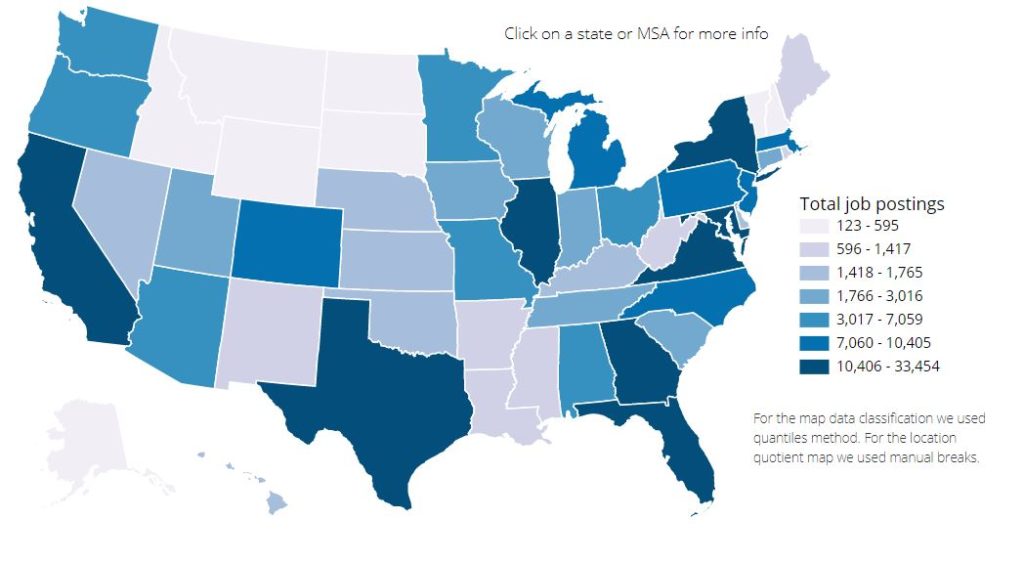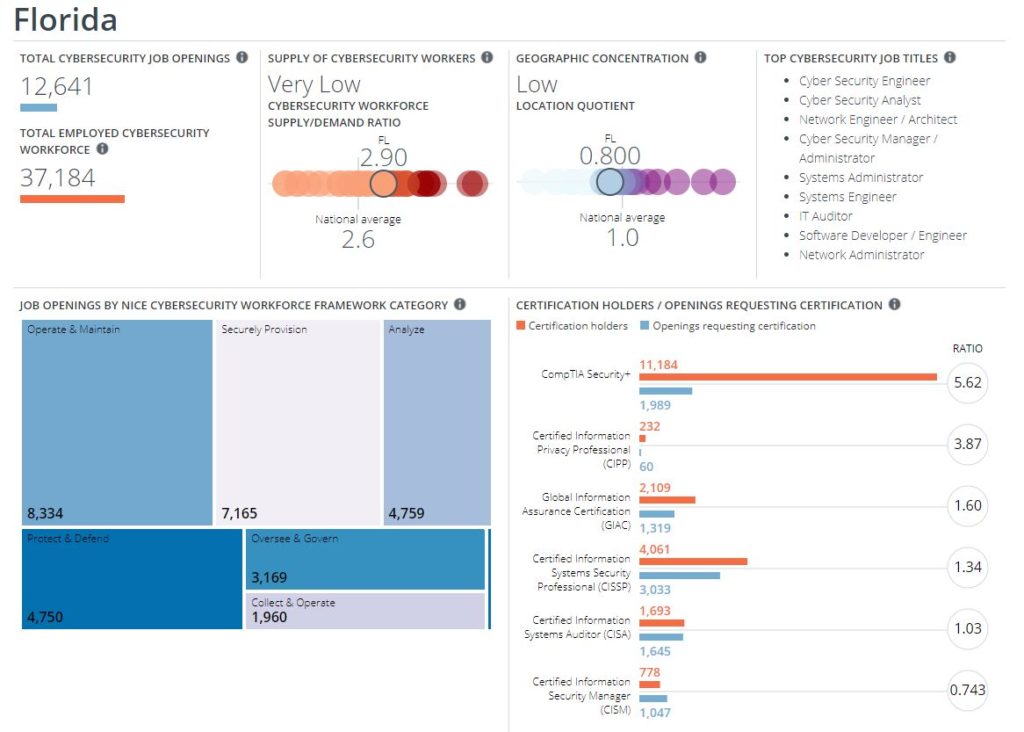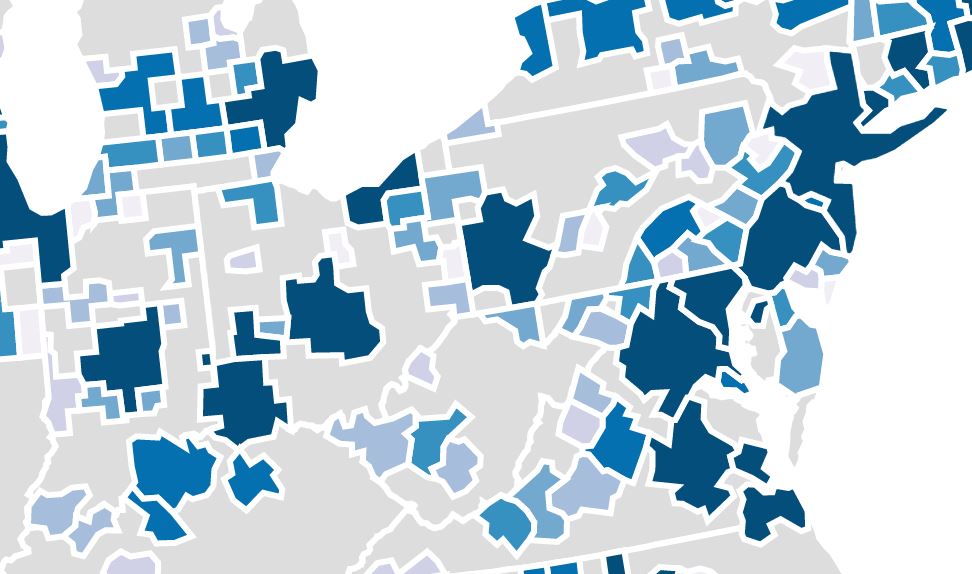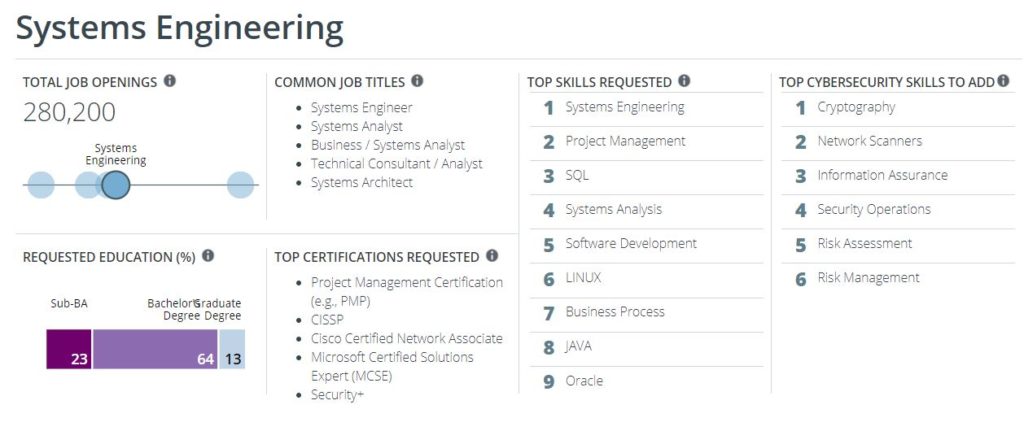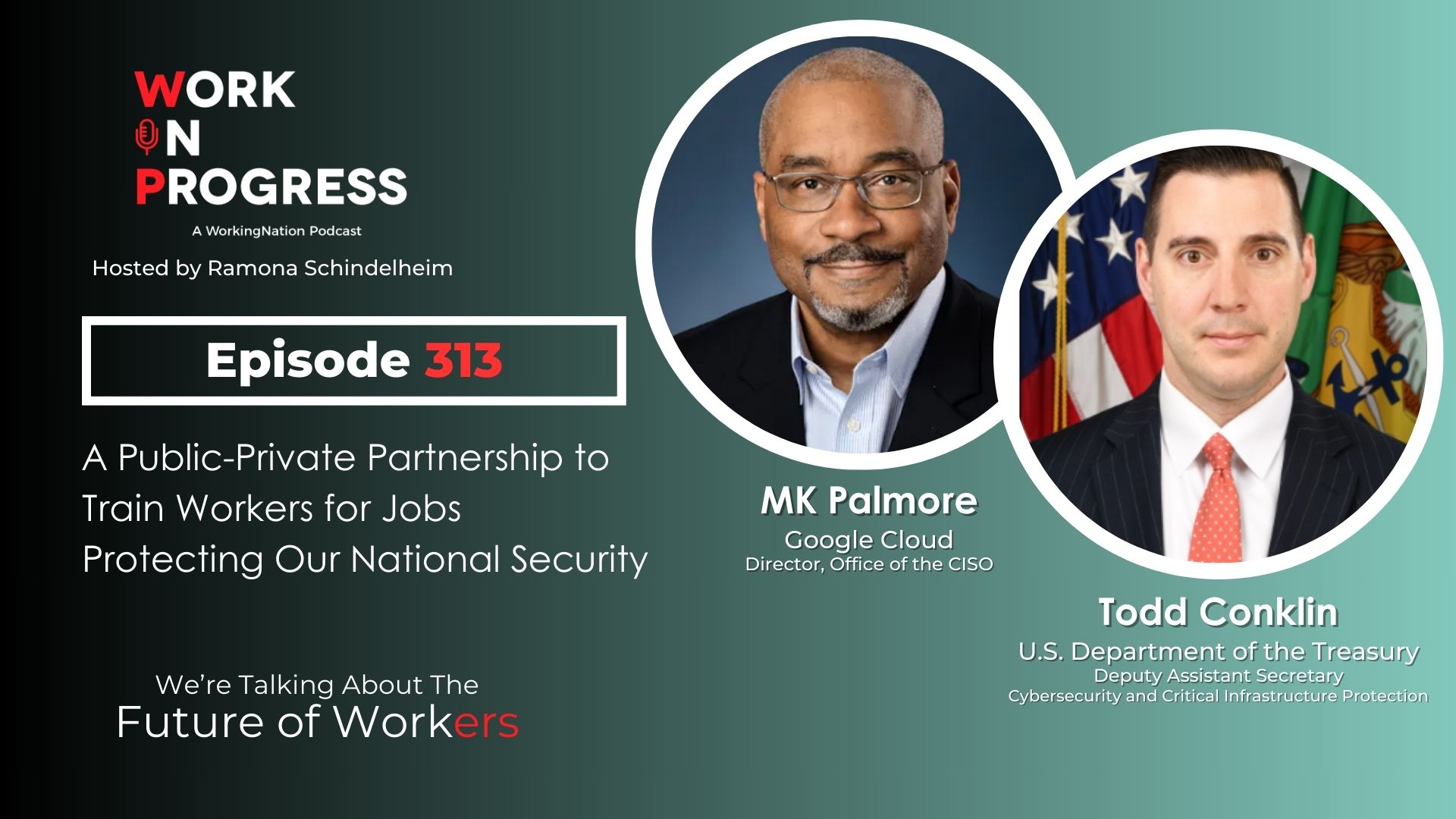Thousands of cybersecurity jobs are open nationwide and two online tools will help you find out where these important workers are needed most.
CompTIA, a leader in industry-standard certifications, is here to point you in the right direction. Its CyberSeek website features a heat map showing which states have the most cybersecurity job openings. Additionally, it has an interactive element showing the pathways and average salaries of careers in this fast-growing IT sector.
Developed in partnership with Burning Glass Technologies and the National Initiative for Cybersecurity Education (NICE), the CyberSeek map aggregates data taken from the more than 200,000 job postings available right now. From Alaska to Wyoming, there are at least 100 open jobs in each of the 50 states in both the private and public sector.
Take a look at the image from the heat map below and notice how cybersecurity jobs are clustered in states with the largest populations and highest job growth. The odds are favorable that you are already living in one of them. You can click on the image to visit the interactive map.
Each state has a detailed breakdown of the types of cybersecurity jobs available and the number and types of certifications requested by employers. In Florida, for example, the ratio of supply versus demand for cybersecurity workers is running above the national average. CyberSeek also breaks down what specialty areas are in demand and defines the roles within each one.
The top job title of Cyber Security Analyst has a median salary of $138,322 in the Sunshine State, according to Glassdoor. Workers in this field can expect to earn a higher single income than the state’s highest median household income. Florida also does not have a state income tax, which makes it a prime destination for migrating workers. It was second behind Texas — itself a top market for cybersecurity jobs — in population growth in 2016-2017, according to the U.S. Census Bureau.
The state with the highest amount of job openings was Virginia, with more than 33,000 available jobs. This is not surprising given the number of government agencies and military bases located in and around the Washington D.C. metro area.
To get a sense of how many positions are open near large cities, the heat map can be displayed by metro area. Selecting this option shows the large concentration of jobs along the Mid-Atlantic Interstate 95 corridor.
Getting Started
Jumping into a cybersecurity career is not for those who are looking for an entry-level position. Getting started in this field requires at least two years of post-secondary education or equivalent certifications across a host of disciplines. CompTIA provides a roadmap of certification training for newbies, starting with IT fundamentals and working toward the cybersecurity path.
For those with IT training and certifications looking to upgrade their skillsets and salaries, CyberSeek’s “Career Pathway” module details which feeder roles are best suited for each sector.
One of the fastest pathways to cybersecurity is through systems engineering. Twenty-three percent of the job openings were open to candidates without Bachelor’s degrees, the largest percentage of the five feeder roles. Since the majority of jobs in the survey require BA’s or above, choosing a two-year associate degree in systems engineering can be a more affordable option. To branch out from systems engineering, CyberSeek lists the skills workers need now and which ones to explore.
Following the career paths upward shows a realistic progression of skills-building and certifications. Having this knowledge and weighing the rate of return on investment compared to potential earnings in the real world is invaluable. Additionally, this resource can provide the data educators and policymakers can use to create industry-aligned curricula to address the skills gap in computer science education.
CyberSeek shows the pathway to six-figure incomes, but it takes work and a methodical approach to lifelong learning. A job as a chief information security officer awaits those who apply their skills to the fullest and the reward for this journey can be even sweeter.
To start your new journey, head to CyberSeek.org.
Join the Conversation: Head to the CyberSeek site and tell us your thoughts about it on our Facebook page.
This article was originally published on January 25, 2018.


